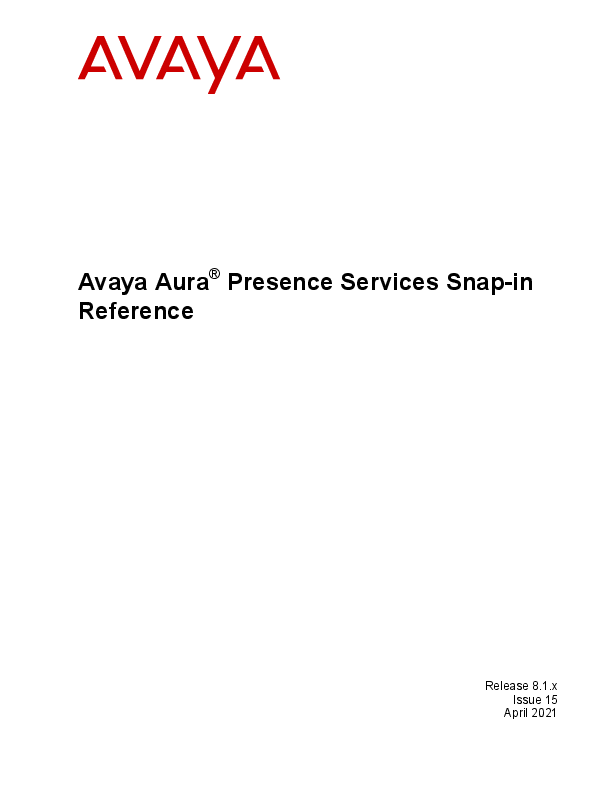About This Document
This document provides detailed information on Avaya Aura® Presence Services Snap-in, covering its capabilities, features, interoperability, performance specifications, security, and licensing requirements. It also includes essential procedures for installation, configuration, administration, and basic maintenance.
It is designed for individuals responsible for installing, configuring, and administering the Presence Services snap-in. For a broader understanding of the Avaya Breeze® platform, refer to the 'Avaya Breeze® platform Overview and Specification' and for deployment guidance, consult the 'Quick start to Deploying Avaya Breeze® platform'.
Change History
| Issue | Date | Summary of Changes |
|---|---|---|
| 15 | April 2021 | Added sections on capacity specifications for multimedia messaging, presMsgStorageStat, and enabling/disabling select same site mode. Updated sections on auto-close/auto-discard for conversations, Message Archiver, message archiving, and Enterprise Basic authentication for REST API clients. |
| 14 | February 2021 | Updated the section on the checklist for integrating AE Services with Presence Services. |
